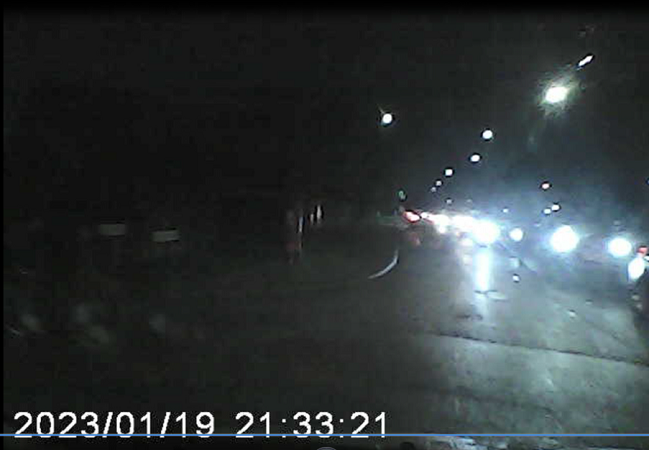My previous blog post focused on how we could use a short intense classification training tool to help mitigate against “Sorry mate, I didn’t see you” (SMIDSY) errors. Unfortunately, only a few days later I found myself muttering these exact words whilst driving home. Thankfully this one didn’t end with a collision though.
I was able to investigate why I failed to see the bike before pulling out of the junction by looking at my dash cam footage and it’s fairly apparent why I might have failed to see the bike on this occasion. The cyclist was wearing all black clothing, with a black bike, and no front light on a dark winter night. After the incident I found myself wondering who was at fault here, the motorist (i.e., me) for not doing a thorough enough check before pulling out of the junction or the cyclist for neglecting high visibility safety features? However, are either really to blame and should we be moving away from this blame culture and instead focusing on developing a safer system for all?
How can we design a safe road system to accommodate such errors of judgement? If we are committed to a safe system, then this is the kind of edge case we need to solve. The answer that gets us to a solution cannot be "it's the cyclist’s fault" or "it's the motorist's fault". For example, as noted in this blog, while blameworthiness is needed for legal recourse, and is important in terms of helping bereaved families obtain resolution after losing loved ones, it is also accepted that if investigations into collisions are to improve safety in future, they need to focus on facts for the purpose of learning lessons, not assigning blame.
There are many different paths we could take with improving road safety for all users. In the instance of this specific case, conspicuity would have helped the cyclist be seen more easily by other road users. For this, we could learn from motorbike research to develop better lighting for cyclist at night to help them be more easily seen. For example, in a trial on New Zealand roads, novel light configurations on motorbikes led to them being spotted earlier compared to motorbikes with a standard single headlight. Fluorescent or reflective clothing would also have aided in this situation, with a recent study demonstrating that reflective material positioned on the cyclists leg was most useful for increasing rider conspicuity (Wood, Black & Tyrrell, 2022), and a randomised controlled trial from 2018 demonstrating very large safety impacts of hi-vis vests.
Despite the effectiveness and accessibility of high visibility clothing, there is relatively low uptake seen in cyclists. How can uptake be improved? Education of younger cyclists is one route, with 14- and 16-year-olds more likely to wear hi-vis after undertaking National Cycle Proficiency Scheme training compared with their peers who did not attend the training (Teyhan et al, 2018). Campaigns for vulnerable road users have also been effective for increasing vulnerable road users’ understanding of their (lack of) night-time visibility (Tyrrell et al., 2004). Further campaigns could be used to help inform those who may not cycle often and are unaware of visibility issues.
Shifting the focus to motorists, how can we improve road safety from the motorist point of view? The Think Bike! campaign was launched decades ago to encourage car drivers to ‘think once, think twice, think motorbike’ when pulling out of junctions. However, these same accidents are still happening, so what more can be done to ensure safer roads?
There is a tendency in ‘Safe System’ thinking to assume that the ‘Safer Users’ pillar is all about education. What the examples above show however (and what many systematic reviews show) is that education approaches can only achieve so much – they are not the answer needed to really ‘move the dial’ in terms of safety outcomes.
The real ‘Safe System’ approach will involve more than treating the symptom (not being seen). As we move towards a future in which active travel is the ‘natural choice’ for shorter journeys, we will need smarter road layouts that separate different user types, lower speeds where modes mix, and a changing culture that prioritises care over mobility. The recent shifting hierarchies reflected in the highway code are one example of this.
There are numerous ways to reduce the risks of SMIDSY errors, but ultimately, playing a blame game and pitting motorists and cyclists against each other, as is frequently perpetuated by the media, is not the answer.
Anyone working in road safety can see that.

